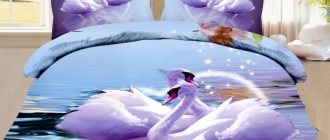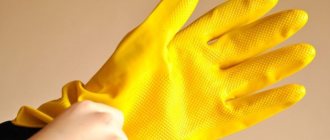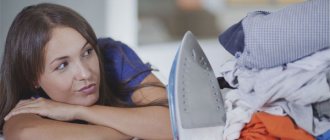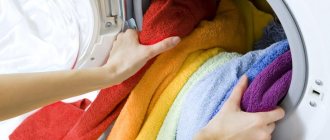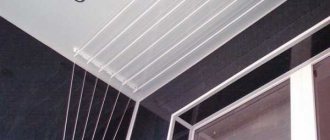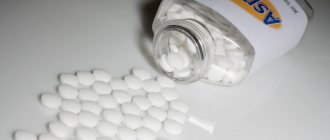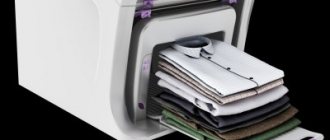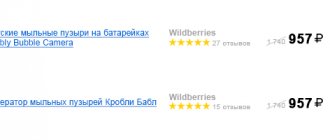Why do you need to boil laundry?
High temperatures destroy dirt that has become ingrained over time and also disinfect things. Boiling is useful for allergy sufferers who cannot tolerate chemical bleaches and powders, but are not ready to give up white. Folk alternative bleaches, enhanced by high temperature, will help to safely solve the problem of yellowness of things at home.
Why boil things
- Eliminate difficult and stubborn stains;
- Bring freshness back to washed and old items;
- Disinfect children's underwear, eliminate harmful bacteria and microorganisms;
- Bleaching items if they have been used or stored for a long time and as a result have turned yellow or gray;
- Bleach white linen if it has faded during washing;
- Dye jeans white and get “varenki”, refresh old denim products;
- Hypoallergenic method of washing if you are allergic to washing powder.
What things can be boiled and what cannot
It is wise to boil only white items. Colored ones shed easily, and restoring color is much more difficult than removing stains using gentle methods.
For home textiles, boiling will help cotton towels and bed linen. But do not boil terry towels, so as not to disturb their fluffy structure.
Clothing should be durable, made of natural cotton or linen: shirts, socks, underwear. And you can’t boil synthetics and things with a lot of decor - they will spoil.
How long to boil laundry
To bleach laundry by boiling, just wait 30-40 minutes. In extreme cases, the fabric is boiled for up to one and a half hours.
What things can be boiled
Synthetic clothing does not tolerate high temperatures. The product label usually indicates the type of fabric and washing method. Fibers from cotton and flax are not destroyed by boiling, things do not stretch, and retain their structure. Light-colored clothing with a pattern, the label of which has a 90 °C mark, is boiled separately from other products. Linen with a rich color, regardless of the material from which it is made, is better not to boil.
Hot water at a temperature of 100 degrees kills harmful bacteria and disinfects things, so the laundry of children, especially newborns, needs to be boiled regularly. In addition, boiling helps eliminate yellowness and grayness, gets rid of old stains and returns things to their former whiteness and presentable appearance.
But this procedure must be performed correctly so as not to spoil the material. In addition, boiling is not suitable for every type of fabric. In this article we will look at how to boil laundry at home correctly and without harm to the material.
What is used
Before boiling, you need to prepare your equipment: the bleaching process is not the most convenient, there is a risk of getting burned.
Choosing a pan
Boil the laundry in a stainless steel pan. Take the largest container; the item should fit freely into it.
There should be no traces of rust in the pan. During boiling, the dirt will come off and settle on the laundry, and such stains are practically impossible to remove.
Wooden tongs
Wooden tongs are convenient for stirring things in a pan; they will not burn your hands. A replacement for tongs is a wooden stick, or, in extreme cases, a spoon with a long handle that will not heat up.
Detergents
Ordinary washing powder or gel, shavings of laundry soap will do. Sometimes bleaches are added, for example, Persol. It is better to choose oxygen bleaches, since chlorine-containing ones are unsafe for fabrics.
Add improvised products such as soda, salt, hydrogen peroxide to boiling water.
How to properly boil things in a saucepan at home
How to properly carry out the boiling procedure:
- Do not move away from the pan if you are covering it with a lid to allow it to boil quickly.
- Turn on medium heat.
- Pour water to about 2/3 of the container.
- The water should completely cover the item; do not boil many items at once.
- Be sure to stir the laundry with tongs so that it does not stick to the bottom and does not burn.
- It is clear from the water when to complete the procedure. It should become noticeably cloudy.
- Boil only white, do not boil things of different shades, even light ones, at the same time.
Advice If you really need to boil and bleach a product with decorative buttons, then peel off the elements before the procedure, and after drying, carefully sew them again.
Recipes for boiling white textiles
Ordinary washing powder often copes with grayness and yellowness, but it would not be amiss to supplement it with various substances with a bleaching effect.
Tip Make sure the clothing tag says “100% cotton” or linen and has a “90°” icon.
Washing powder and bleach
The most logical and popular way to boil and bleach laundry is to use washing powder together with industrial bleach:
- Pour 0.5 cups of washing powder and the same amount of dry or liquid bleach. Fill with clean cold water. Stir the solution and place the laundry in it.
- Bring the solution to a boil, reduce the temperature. It is better not to put fabrics in boiling water so that the contamination does not become completely ingrained.
- Boil until the water becomes cloudy.
- Turn off the stove and let the solution cool, only then remove the product.
- Wash and rinse as usual if yellow or gray has penetrated deep into the fibers.
Tip: Open a window to prevent bleach fumes from harming your health.
Washing powder and hydrogen peroxide
Hydrogen peroxide as a bleach will enhance the effect of the powder. For a pan, 0.5 cups of peroxide or 10 tablets of hydroperite are enough.
Chlorine bleach
In advanced cases, it is possible to use chlorine, but products containing it negatively affect the structure of the fabric. Coupled with boiling, this bleaching can render your favorite sheets unusable, so think carefully before pouring “Whiteness” or anything similar into the pan.
Salt
A cheap and hypoallergenic product for disinfecting and bleaching things. 500 g per pan + regular powder or powdered bleach. The product works well in combination with chlorine bleach.
Vegetable oil bleach
Non-standard bleaching method: 0.5 cups of washing powder, 0.5 cups of bleach and 0.5 cups of vegetable oil. The mixture works on old yellowness.
Boiling with boric acid
Boric acid restores whiteness and disinfects. Add 7 tbsp to warm water. l. solution and boil things according to the instructions.
Tip Many washing machines have a wash function at 95 degrees. It replaces the inconvenient boiling in a saucepan, but many folk remedies cannot be added to the machine.
Boiling laundry for bleaching in a saucepan at home: methods
Home » Home and Life » Boiling laundry for bleaching in a saucepan at home: methods
Any woman knows that in the past very often their grandmothers and great-grandmothers boiled laundry. This method of heat treatment of linen was used for the purpose of disinfection, as well as high-quality cleaning of things.
This method was especially effective for natural fabrics that cannot be properly cleaned with powder. Currently, boiling laundry is especially important for those who have problems with allergies to modern chemicals; the laundry has lost its freshness and aesthetically attractive appearance.
Usually, modern housewives have many questions: how to carry out the procedure correctly, in what container to boil, how exactly to boil laundry at home so as not to spoil it. Usually the procedure is carried out in a pan, but not in an aluminum one - the container should only be enameled.
You can use a galvanized tank. There are several basic methods that will not only clean laundry efficiently, but are also suitable for different types of fabric.
They differ from each other in the auxiliary substances responsible for disinfection and cleaning of linen:
- White linen is usually boiled in a solution of laundry soap and soda.
In this case, it is almost impossible to overdo it with laundry soap, but you need to be more careful with soda. This means that the fabric will not deteriorate and will whiten as much as possible. The proportion of the solution is prepared in accordance with the following recommendations: for 1 liter of water, use 20 grams of crushed laundry soap and 1 teaspoon of baking soda. This method will be a suitable option for children's linen and things. - It’s great to boil bedding in a solution of oxygen bleach and water.
For every 6 liters of water, dissolve 2 tablespoons of dry persalt mixture. Persalt can be successfully replaced with hydrogen peroxide. It is possible to enhance the effect of exposure with the help of ammonia. For the same 6 liters, 1 spoon of ammonia is used. - The above methods are usually not suitable for colored linen and items, as textile dyes may fade.
You also cannot use white to boil colored things - the solution should be as gentle as possible. It is best to purchase special bleaches that are suitable for washing machines with a boiling function. - It is important to boil your underwear correctly.
It requires a particularly delicate attitude towards oneself. The ideal option would be a solution of washing powder and soda ash. Dissolve 100 grams of soda and 125 grams of powder in five liters of water. When the water boils, place the underwear and boil in the liquid. Even children's textiles can be processed in this way. - Boiling things with vegetable oil, stain remover and powder.
This processing method is fast and high quality. After such treatment, active washing in a washing machine is required. Additional rinsing may be required, since the fatty base of vegetable oil, which must be refined, is difficult to wash off.
There are a huge number of other mixtures that are used for heat treatment. They often have unpredictable consequences, so they are used less often.
Boiled items usually smell fresh, but only after they have been thoroughly rinsed and dried. Ventilation is carried out over a long period of time. Sometimes additional rinsing or washing is required. These methods are the most effective and tested in practice.
How long does it take to boil laundry?
For bleaching, gentle substances and products are usually used. A natural question arises: how long should the procedure take to ensure that things are cleaned as much as possible without damaging the fiber itself?
Of particular importance is the aggressive effect of the components of solutions over time. Even the most harmless product can ruin a thing completely or partially.
Note! Boiling can only be done effectively if the timing is correct.
At home, it is important to monitor the boiling time and temperature of the stove on which the procedure is performed. The procedure can be secured only if the function in the washing machine is used for boiling. Here the device determines the time independently.
The only drawback is the low boiling point - 95 degrees. Protecting things from fungus does not mean oyster mushrooms, but quite harmful spores. It will also prevent further formation of almost all types of spore bacteria.
Boiling time for things when using different substances and methods of carrying out the procedure:
| Boiling solution | Features of thermal effects | Boiling time |
| Soap and soda solution | If the process is carried out in a bucket, then the boiling time will be reduced by a quarter, since the bottom of the galvanized bucket is quite thin and heats up quickly. | The laundry should be boiled in a soap-soda solution for approximately two hours. |
| Oxygen bleach | Boiling is carried out mainly using a container such as a boiler or tank. | It is not worth treating things in such a solution for a long time, since the components of the substance can have a detrimental effect on the textile base. |
| Washing powder + soda ash | Produced in boiled water, but over low heat. A small container is used. | Boiling is carried out for a maximum of half an hour. Then wash, rinse and dry. |
| Vegetable oil based solution | If the procedure is carried out on a stove, then it is especially worth monitoring the intensity of boiling water. | The procedure is performed within just a few minutes – approximately 10-20 minutes. |
Useful video
Share this post
- Related Posts
- How to iron a long-sleeved shirt quickly and correctly?
- Where to relax in April at sea without a visa and inexpensively?
- How to clean a white leather bag at home?
- How to tie a thin tie step by step: step by step instructions
- Female names according to the church calendar: by month
- Booties for newborns on two knitting needles: for beginners and step by step
Add a comment Cancel reply
For any color
Colored and permanently dyed fabrics are boiled for no longer than 30 minutes. This way you can get rid of sweat and grease stains. Chlorine bleaches are prohibited.
Boil colored items if you are ready to wear them after they are clean but have lost some of their brightness.
Laundry soap with soda
Grate the soap bar. Mix 50 g of chips with 5 tbsp. l. baking soda. Pour water over everything and stir until dissolved. Now place the item in the pan and heat it up. Don't forget to stir.
Salt with water
Sometimes just salt is enough. Per pan - 1 cup of product. Soda ash in the same amount will help enhance the effect of the granules.
For baby clothes
Boiling baby clothes is necessary in order to reduce the likelihood of skin diseases, destroy harmful microorganisms and get rid of odors.
Use products that are odorless and mild. This is baby soap or gel, soda, salt.
To avoid damaging the fabrics of children's clothing, rub them with soap in advance and then place them in the pan.
When and why should you boil laundry?
Now there are a large number of washing powders, including those for washing children's clothes. Despite this, pediatricians strongly advise boiling diapers for babies under one year of age. After boiling, children's clothing will be environmentally friendly. People with severe allergies to the components of washing powder are also advised to boil laundry.
A method such as boiling will help remove stains that are deeply embedded in clothing, kitchen or bedding. The product effectively copes with traces of grease, food, blood and many other stains.
Boiling will return the items to their original purity, and after adding bleach, soda or other substances, the clothes will become crystal white.
How to enhance the whitening effect
Three simple ways to enhance the whitening effect:
- Rinse items after washing in a white vinegar solution.
- Optical brighteners are commercially available. These products do not remove dirt, but have luminescent components that make the white shine in sunlight.
- After bleaching, dry white items in the sun.
Over time, any thing loses its perfect whiteness, be prepared for this. Do not put off color restoration until later - as soon as you notice the yellowness of your clothes, immediately select the appropriate bleaching method.
